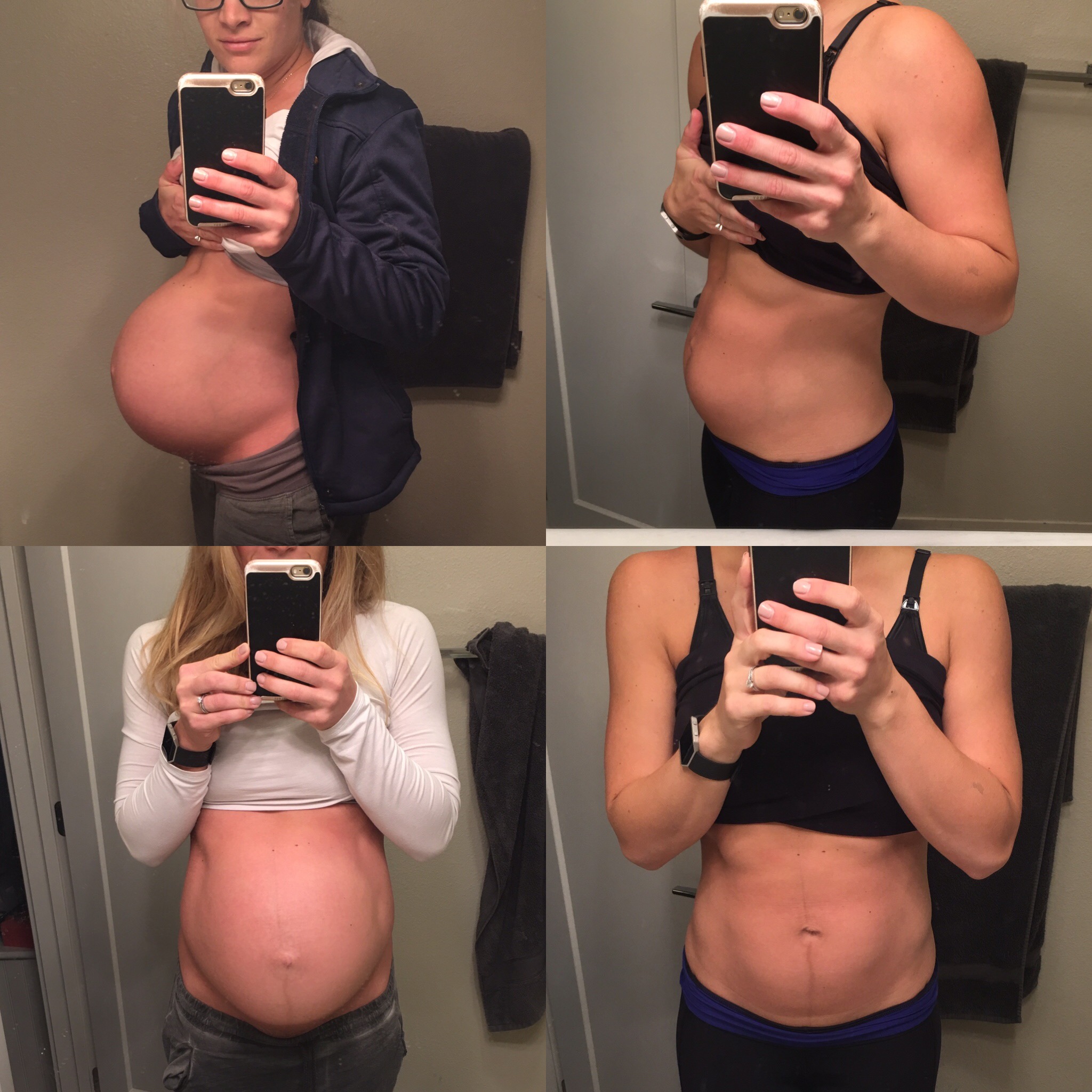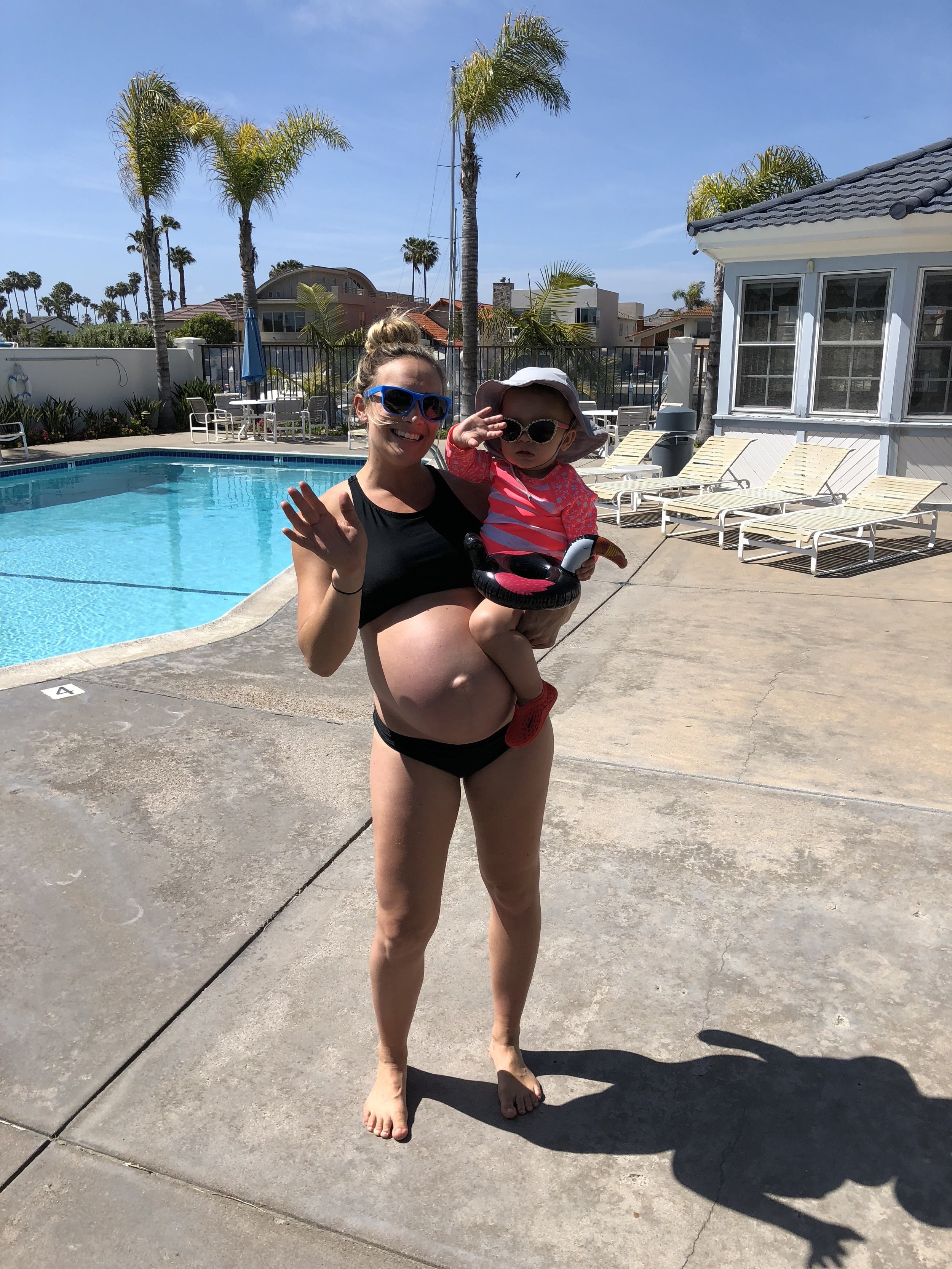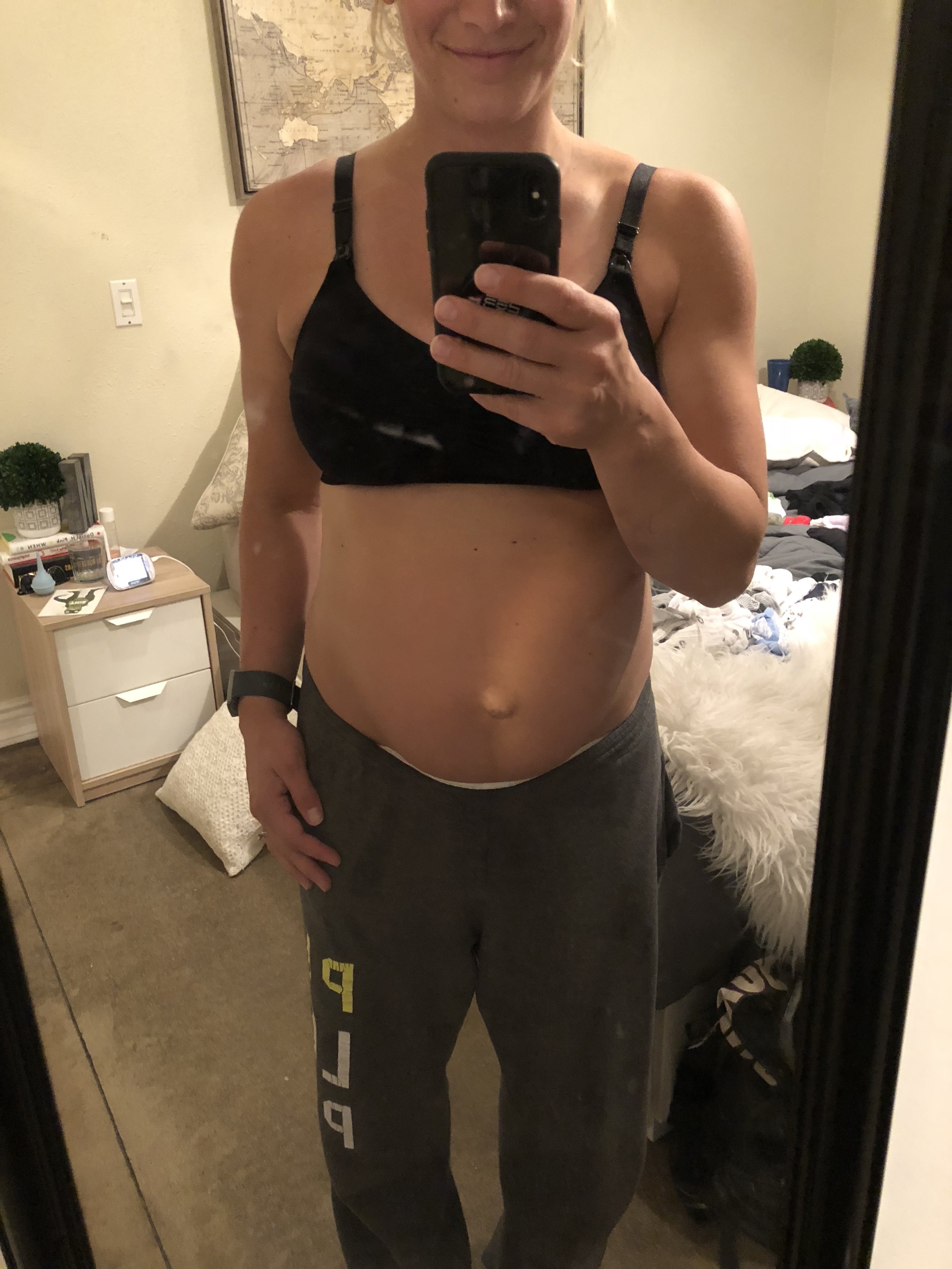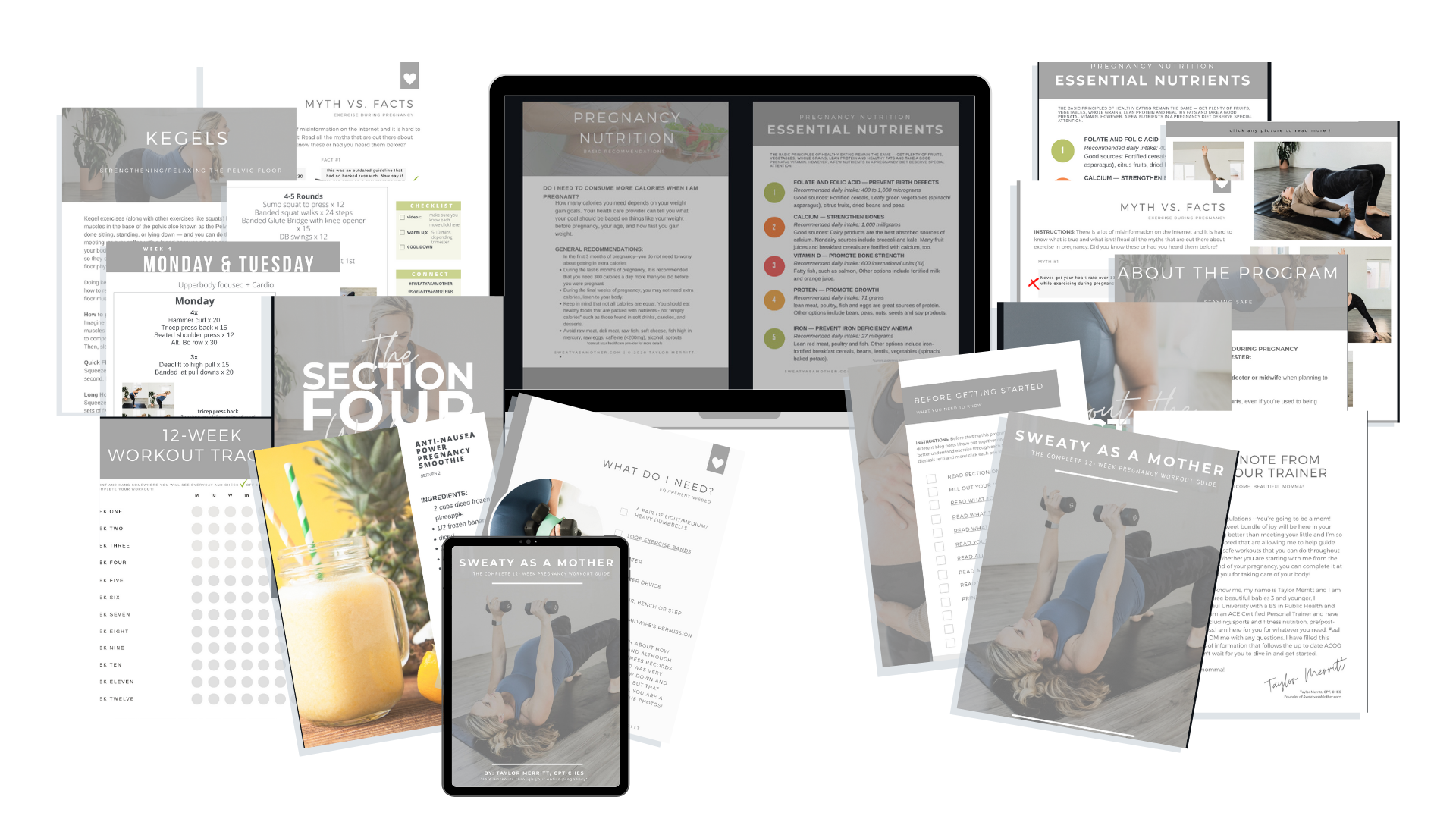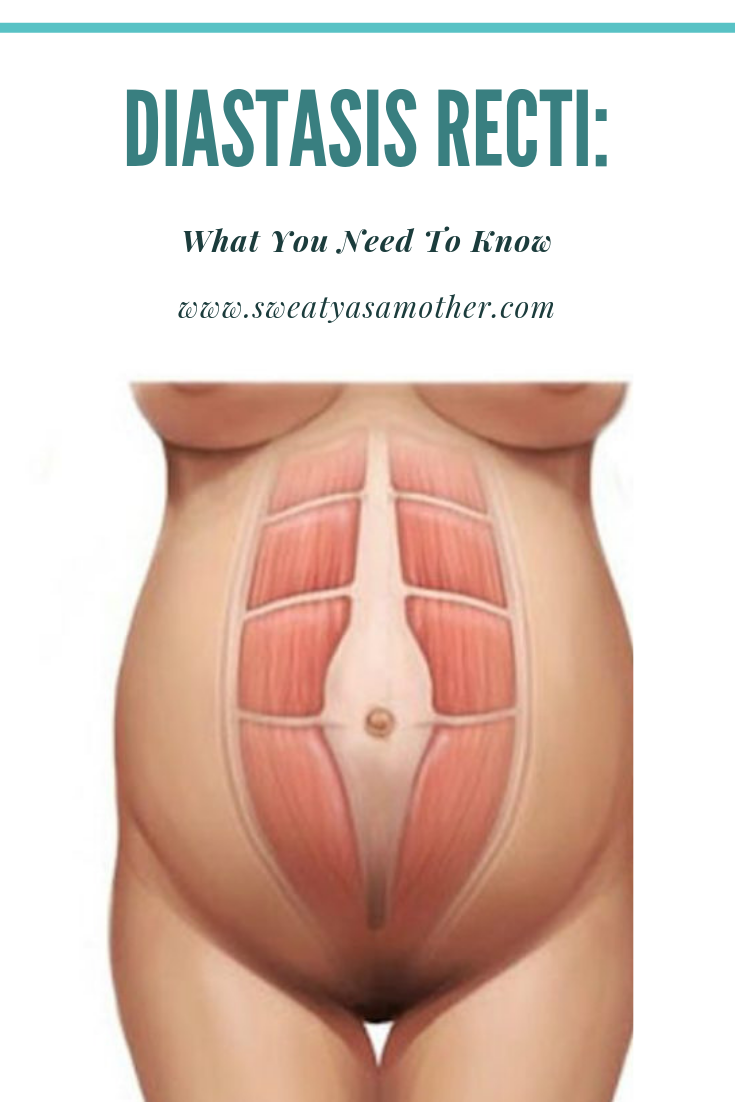Diastasis Recti : What you need to know
Diastasis recti…many have heard of it but may not even know they have it. Stats say that 2 out of 3 women have it after the early postpartum period. Unfortunately, it often goes undiagnosed and can cause a lot of issues.
After my first pregnancy, I did not pay much attention to it—as I was not as educated as I am now— and had some of the symptoms and just brushed them under the rug and accepted it as my “new normal”. I wanted to learn more because I was fed up and did my research and worked on my continuing education to make sure I could not only help myself but also my clients.
I always mention before discussing things that * I am not a doctor and this post is not meant to diagnose or treat, but is here to help educate and share my journey and ways I have helped myself and clients heal both during and after pregnancy. *
from trucentered.com
So what is it anyway?
Diastasis recti is a condition where the linea alba (abdominal connective tissue) has separated. The connective tissue between our abdominal muscles is what holds them together, it is what holds in our internal organs and stabilize our core. When these muscles stretch out as the belly expands, it causes the connective tissue to weaken. Normally the body should heal on its own after delivery and once your hormone levels return to normal. If the muscles don’t heal the way they are supposed to, this is when you can be left with a gap between the muscles that is what can cause the many issues women are left with postpartum.
Without the tissue intact, many mothers feel they have what’s commonly called the “mummy tummy,” which appears as a pouch in the lower belly area (Not fun).
Want to know something crazy—ALL women have this during pregnancy and sadly, it is under discussed. At my 6 week postpartum appointment they never once brought it up until I mentioned it. I could go on and on about the postpartum care regimen, but I am not going to go there today. haha.
9 months preggo vs 1 week pp core was so weak and separated.
So what are the symptoms?
mom “pooch”
gap in your core (see video on how to check for this) see doming or coning when performing exercises or sitting up
Bladder Leakage - many mom’s I talk to think this is “normal” and it is notWeak Pelvic Floor Muscles (causes the bladder leakage and other things)
Constipation (I did not have this)
Lower Back Pain (so common)
Poor Posture (especially after breastfeeding)
One huge thing I noticed during my second pregnancy was a visible (palpable) separation of abdominal muscles resulting in dome-like protrusion. It literally looked like a cone when I would flex. I am thankful that I had enough education about this and was able to stop doing exercises that made it worse.
What is hard is that many of the symptoms I listed above are common symptoms of pregnancy so women often don’t realize that the cause of their lower back pain or bladder leakage could be a result of diastasis recti. I myself experienced extremely intense lower back pain during the third trimester of my first pregnancy and attributed it to just normal pregnancy symptoms but it was only the start to my other issues.
So How do I Determine if I have it?
Performing a Quick Test for Diastasis:
Lie on your back with knees bent, feet flat on the floor.
Place a hand behind your head for support.
Place the index and middle fingers of your other hand just above your belly button, pointing them downward.
Raise your head and neck off the floor and press your fingers into the separation between your muscles.
If you can fit more than two fingers into the opening, you likely have a diastasis.
Your doctor can diagnose this condition with a simple physical exam.
WATCH THIS VIDEO BELOW FOR A DEMONSTRATION:
WHAT IS AN UMBILICAL HERNIA?
In rare cases where the connective tissue tears, abdominal organs can sneak through the tear creating an even bigger problem. I am not telling this to scare you, but only to share because well it happened to me. I was so sick and had a pretty bad cough. Not only did I have all the pressure from the baby, but I literally coughed so hardone day at work that I felt my belly button “pop” and my intensives were protruding through my abdominal wall and into my belly button. Ya it was not fun.
A hernia is when a part of your body that should be inside (like part of your intestine or bowel) pokes out through a weak spot in your abdominal wall. You will see a bulge, or an outie belly button, or a thumb-shaped protrusion. Mine was tender to touch, but I was able to push it back in after it would pop out.
If you have an umbilical hernia during or after pregnancy, more than likely you may have a Diastasis Recti. Although this is true, remember that Diastasis Recti is not a hernia - while they can co-exist, they are not related.
above you can clearly see my hernia 8 months pregnant (left) & 2 days pp. I chose not to have surgery and worked on healing my core and fortunately have it under control. I do not lift as heavy anymore because I can feel it then, but it does not affect me in any other way.
Gentle Exercises to Help Heal Diastasis Recti
Doing these everyday will help a lot, but I want to make sure though that you know that your gap may never close and that is okay, but what matters is if you are able to create good tension it will help so much! what I mean by this is that you may be able to fit 2 fingers in your belly button, but you are unable to stick your fingers down into the gap “tension”
Here are the exercises:
Supine Alternating Heel Drops | 5 reps per side
Lie on your back with your arms out by your sides and palms flat on the floor.
Lift your legs up to a tabletop position (knees bent to 90 degrees, shins parallel to the ground).
Keeping your left leg stable, inhale to slowly lower your right heel to the ground.
Engage your deep core muscles and exhale to bring your leg back up to the starting position.
Continue alternating sides to do 5 full reps.
Side Knee DrOps | 10 reps
Lie on your back with your arms out by your sides and palms flat on the floor.
Bend your knees and plant your feet on the ground with your knees and feet together.
Keeping your left leg stable, inhale as you slowly lower your right knee towards the ground as far as you can without allowing your foot to roll to the side or your hips to rock.
Engage your deep core muscles and exhale to bring it back up to the starting position and press your knees together.
Continue alternating sides to do 5 full reps.
Modified Side Plank | 10 breaths per side
Start by lying on your side.
Bend your knees to a 90-degree angle and form a straight line with your body from your shoulders to your knees.
Press up onto your forearm and place your top arm on your hip.
Tighten up your core muscles and breathe deeply.
Hold this position in good form for 10 deep breaths, then switch to the other side.
Seated Tummy Flex | 10 breaths
Get into a comfortable seated position.
Place one hand on your belly and the other hand on your hip.
Sit up tall and lengthen your torso.
Keeping your posture tall, take a deep breath and allow your tummy muscles to relax completely.
Exhale and flex your stomach as you imagine the gap between the abdominals closing. You may even wish to place your fingers directly on the gap to draw your attention here.
Continue inhaling and relaxing and exhaling and flexing for 10 deep breaths.
Supine Palms to Knees | 10 breaths
Lie on your back and lift your legs up to tabletop position (knees bent to 90 degrees, shins parallel to the ground).
Place your palms on your knees.
At the same time as you are pressing into your knees with your palms, use your knees to press into your palms.
Imagine you have two grapes between your palms and knees and you need to press hard enough to make grape juice.
Engage your deep core muscles and continue to press in both directions as you breathe.
Keep your head, neck and shoulders relaxed on the ground as you focus only on the sensations in your core muscles. This should not feel like a strain.
Inhale and exhale deeply for 10 breaths as you maintain good form.
Supine Bird Dog | 5 reps per side
Lie on your back and lift your legs up to tabletop position (knees bent to 90 degrees, shins parallel to the ground).
Raise your arms straight up and point your fingertips to the ceiling.
Take a deep inhale as you slowly stretch your left leg out long in front of you and your right arm up over your head.
Stop once your arm and leg are about one foot off the ground.
Exhale as you bring them back to the starting position.
Alternate sides and continue for 5 reps per side.
Glute Bridges | 10 reps
Lie on your back and plant your feet flat on the floor with your knees bent.
Place your hands out to your sides with palms down for support.
Walk your heels in until they are just below your knees.
Press your feet into the floor and lift your hips up.
Flex your abs and butt muscles at the same time to form a straight line from your shoulders to your knees. It’s important not to overarch the back. At the top of the movement your abs should be flexed and core tight.
Slowly lower down to the starting position. Repeat to perform 10 reps.
Exercises To Avoid :
All of these exercises create a lot of pressure in the abdominal wall and should be avoided in pregnancy and if you are having any symptoms of diastasis recti. This does not mean to not workout or do core exercises during pregnancy, but what it means is to do different exercises instead of these 6 above!
Sit-ups
Crunches
Planks
Leg lifts
Russian Twists (or any twisting creating a pull)
push-ups without modification
Conclusion
Unfortunately, there is no way to prevent Diastasis Recti that is guaranteed to be 100% effective, but there are things you can do to make sure it does not get worse. I recommend starting to strengthen your core before getting pregnant, ** Always consult your doctor if you have questions** This study showed that “The occurrence and size of DRA is much greater in non-exercising pregnant women than in exercising pregnant women.” Lastly, focus on good posture and avoiding the exercises I shared above. ( if you need to use a belly band. that can help take alot of pressure off. I had one like this one. )
I am proud to share I have no bladder leaking issues and have closed the gap in my belly button to only 1 finger! Although it may never fully close, I am not suffering from an symptoms and I am able to workout and go through my daily routines without any issues.
If you have any questions leave them in the comments and if I do not have the answer, I can use my resources or direct you to someone who may have a better answer! Also, as always, I would love to hear your diastasis recti stories.
My favorite 2 Instagram accounts for postpartum:
xoxo Taylor
Needing more guidance for working out while pregnant or in the postpartum period? Look no further
The Complete Pregnancy Workout Guide includes a 12 weeks, of moderate to low-impact workouts that can be followed and repeated throughout each trimester, nutrition recommendations, exercises to help keep core and pelvic floor strong, preparing for labor/delivery and more with over 80 pages of the most up-to-date information!
In the beginning you will work to create a solid foundation to tone muscle, increase circulation, and endurance.
As the weeks progress, you will work to increase your strength and stability and help minimize pregnancy aches and pains.
Staying active will not only boost your stamina and strength, but can relieve stress and prepare for delivery.
Each week includes resistance and strength training as well as active recovery and yoga. Active recovery includes prenatal yoga and core workouts to get your body ready for delivery to meet your sweet baby or babies!
When to Start Pregnancy Exercises
The best time to start pregnancy exercises is when you discover you are pregnant.
The second best time to start pregnancy exercises is now. Of course, get the green light from your midwife, OB-GYN, or doctor before beginning any pregnancy exercises.
This 12 week workout plan has exercises that are safe throughout your entire pregnancy and can be done from home or anywhere!
Over 100 different exercises with photo and/or videos.
PDF format that is available to use on iPhone/iPad/Android/Kindle/Computer.
Equipment needed: Dumbbells and loop band
Let’s get #Sweatyasamother together

